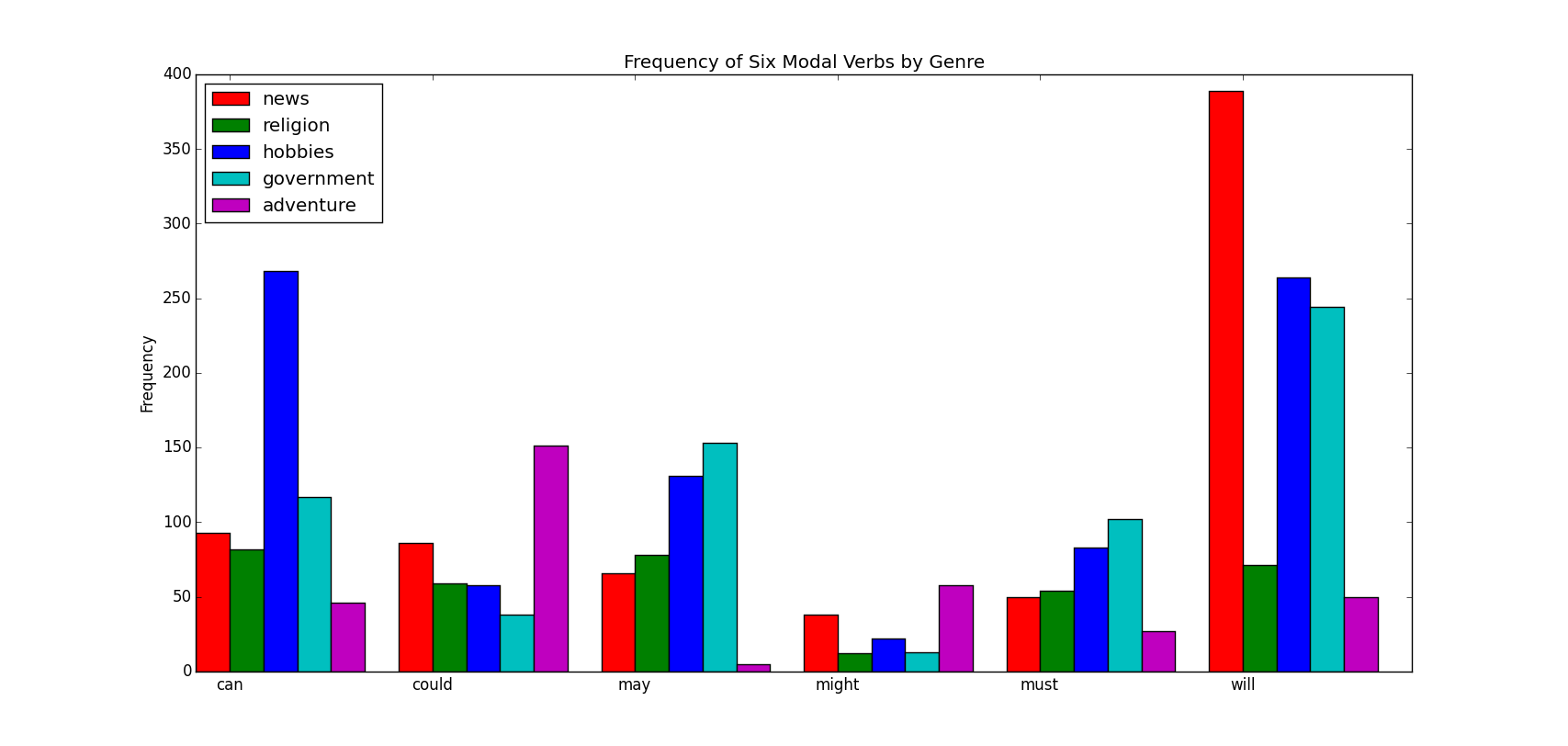Natural Language Processing with Python
Chapter 4.8
1 colors = 'rgbcmyk' # red, green, blue, cyan, magenta, yellow, black 2 3 def bar_chart(categories, words, counts): 4 "Plot a bar chart showing counts for each word by category" 5 import pylab 6 7 ind = pylab.arange(len(words)) 8 width = 0.1*1 / (len(categories) + 1)*10 9 bar_groups = [] 10 for c in range(len(categories)): 11 bars = pylab.bar(ind+c*width, counts[categories[c]], width, 12 color=colors[c % len(colors)]) 13 bar_groups.append(bars) 14 pylab.xticks(ind+width, words) 15 pylab.legend([b[0] for b in bar_groups], categories, loc='upper left') 16 pylab.ylabel('Frequency') 17 pylab.title('Frequency of Six Modal Verbs by Genre') 18 pylab.show() 19 20 def test_bar_char(): 21 genres = ['news', 'religion', 'hobbies', 'government', 'adventure'] 22 modals = ['can', 'could', 'may', 'might', 'must', 'will'] 23 cfdist = nltk.ConditionalFreqDist( 24 (genre, word) 25 for genre in genres 26 for word in nltk.corpus.brown.words(categories=genre) 27 if word in modals) 28 counts = {} 29 for genre in genres: 30 counts[genre] = [cfdist[genre][word] for word in modals] 31 bar_chart(genres, modals, counts)
修改了width,结果为:
